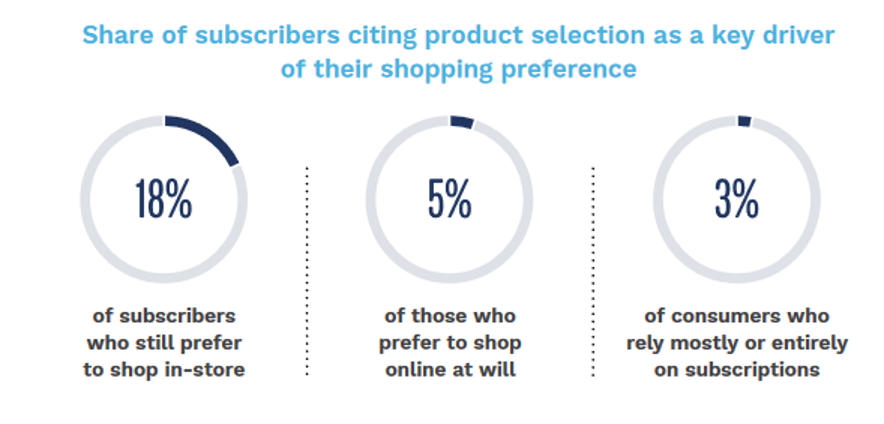
Global recorded music revenues exploded in 2023, thanks mainly to a surge in paid streaming subscribers.
According to The IFPI Global Music Report, revenues from recorded music worldwide were up 10.2% last year to $28.6 billion, surpassing 2022’s 9% increase and marking the ninth consecutive year of growth.
The main driver behind the revenue spike was paid music streaming subscriptions, which were up 11.2% last year. The number of paid subscribers exceeded 500 million for the first time, reaching 667 million accounts worldwide.
This news comes as music to the ears of record company executives, artists and others in the industry. But it also suggests digital music providers such as Spotify can be thankful they don’t have to deal with the many challenges other retailers must juggle when working to meet the needs of their subscriber base.
Make no mistake, retail subscriptions can be profitable. A PYMNTS Intelligence study revealed that 30% of retail subscribers generate 79% of total revenue across the retail subscription space. One retailer alone, Chewy, recently reported that its autoship subscription program was responsible for generating about $8.5 billion in customer sales throughout 2023.
Not only can retail subscription plans prove profitable, they are also an effective way to keep customers happy. PYMNTS Intelligence’s “The Replenish Economy: A Household Supply Deep Dive” report found about 42% of retail subscribers were able to minimize trips to their preferred stores because those retailers offered online subscriptions that met customer needs.
But keeping those customers happy can be challenging.
As PYMNTS Intelligence found in compiling “The Retail Subscription Features That Make Top-Performing Merchants,” “[retail] subscribers who complete most or all their shopping via scheduled delivery and/or automatic refills are a lucrative but demanding group of customers.”
The report is based on surveys of 2,011 consumers and nearly 200 merchants and provides a comprehensive overview of what today’s subscribers look for in subscription services.
For starters, consumers who are scheduled subscription shoppers (those who mostly shop via pre-scheduled and automatic refill subscriptions; roughly 26% of respondents) expect a smooth payment experience. In fact, they are much more likely than other consumer segments to cancel subscriptions should any payment-related problems arise.
For instance, if a merchant doesn’t offer a buy now, pay later (BNPL) option, these subscribers are around 3 percentage points more likely to cancel. They are also more likely to walk away if a merchant fails to notify them that a failed payment will result in a missed delivery, or if they encounter any friction when updating their accounts.
This segment also expects hassle-free refunds. After all, the reason most sign up for pre-scheduled deliveries is because they anticipate effortless shipments, and they believe frictionless returns are part of that package.
Another type of subscription shoppers are online at-will shoppers. They make up 43% of the retail subscriber community and typically complete their at-will shopping online. For this segment, timing is crucial. Most will wait to purchase items when needed. And one-quarter of them will cancel a subscription if it fails to offer pause or skip options, which enable consumers to temporarily pause a subscription for any reason or skip an order before its delivered.
The third segment, accounting for 31% of subscription shoppers, are in-store shoppers. They mainly shop in brick-and-mortar locations despite having online retail subscriptions. The reason? Respondents said they enjoy the thrill of the hunt. They want to explore potential purchases in person and control product selection whenever possible.

As the image above shows, product selection is especially important to in-store retail subscribers. They are six times more likely to cite it, and easier browsing, as key components to their shopping experience.
Not all merchants offer the features subscribers want, but PYMNTS Intelligence identifies the features the highest-rated retailers offer.
For instance, 100% of top performers give subscribers the option to pause or skip (only 20% of the lowest-ranked merchants do the same). Ninety-seven percent of top performers provide product details and the ability to alter the frequency of deliveries (60% and 10% of bottom performers, respectively, do the same). Guarantees and refunds are also offered by 97% of top performers (while 17% of bottom performers do).
One thing these findings make clear is that subscription providers — whether they operate in the retail space, the entertainment industry, or another market entirely — can’t take their subscribers for granted.
As PYMNTS Intelligence data found, subscribers are keenly aware that today’s subscription landscape is highly competitive and full of entrepreneurs looking to earn their business. If providers want to keep sustaining growth, they will need to clear the bar that subscribers set.